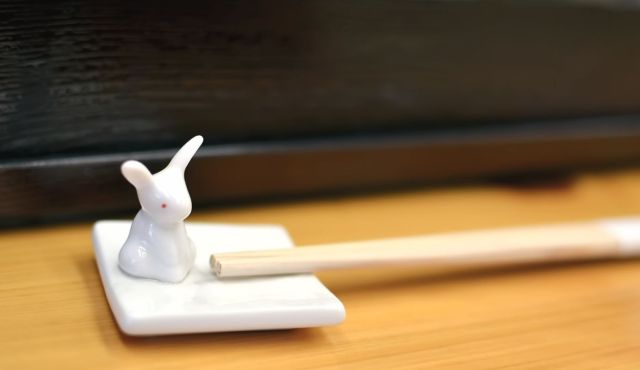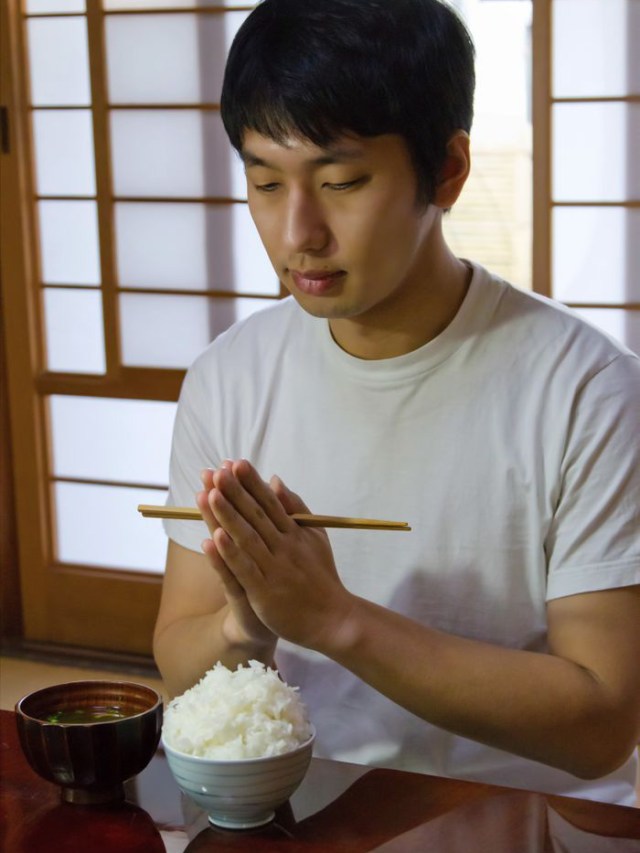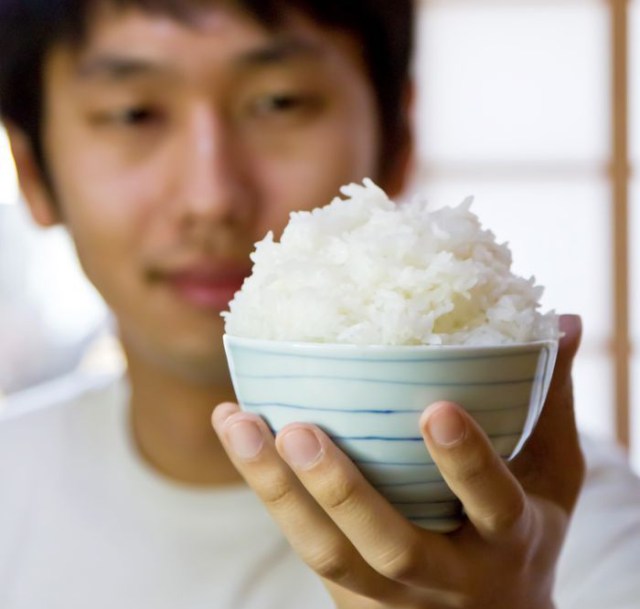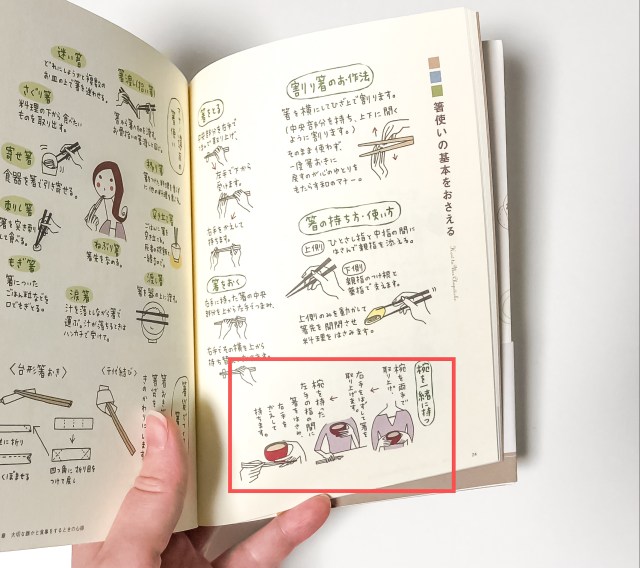
An introduction to the finer details of Japanese dining etiquette.
Delving into the world of Japanese etiquette can take you on a deep, deep dive to places even Japanese people don’t know about. After exploring the ins and outs of adding wasabi to your sushi and the art of eating rice balls, people around the country are now discovering the proper order for picking up their bowl and chopsticks…or should that be chopsticks and bowl?
Here to give us the answer is “refined elegance manners instructor” Chiemi Matsui, who recently published a book called “Otona no Seikatsukan wo Tsukuru Kyouyou to shite no Tabekata“, which translates to “How to Eat in a Refined way to Create an Adult Neatness“.
『おとなの清潔感をつくる 教養としての食べ方』著者:松井千恵美
— サンマーク出版の電子書籍 (@sunmarkbook) November 20, 2021
海外要人やビジネスエグゼクティブ・VIPは、「会食」で「知性と教養」を見ていた!
もっとも無防備な「食べ方」を変えてステージを上げる「知的印象操作術」!https://t.co/ZENrEoTBEp#新刊情報 #立ち読みできます #電子書籍 pic.twitter.com/LEz8WVagjD
One section of the book addresses the topic of how one should begin to eat a Japanese meal. Typically, a Japanese meal consists of rice, soup, and a number of side dishes, to be eaten with a set of chopsticks, which is typically placed on a chopstick rest between the diner and the meal.
While it’s common knowledge that the bowl of rice should be lifted with one hand while eating, if you were to ask a Japanese person which they should pick up first, the bowl of rice or the chopsticks, it’s likely they won’t know the answer.
Some people might pick the bowl up first, or maybe the chopsticks, or they might lift both at the same time. Others will even hold the chopsticks between their thumbs while clasping their hands together to say the pre-eating “itadakimasu“.
Others won’t be able to tell you their process as it’s simply a natural movement and something they’ve never stopped to think about when eating. However, Matsui says there is a proper order that should be followed when you want to display refined manners, and it starts with the bowl.
Matsui says Japanese food should be thought of as “vessel first”, due to the fact that tableware is delicate and should be treated with care and respect. Furthermore, traditional dining etiquette adheres to the principle of “upper left and lower right”, which are seen as “top” and “bottom”, where the rice and miso should be placed respectively. This is because rice is deemed to be the most important and respect-worthy part of the meal — each grain is said to hold seven fortune gods, after all — although people in Osaka go against the grain by switching up the positions for practicality.
▼ One small bowl, so many gods.
Although rice is considered to be the most prestigious part of the meal, that doesn’t necessarily mean it should be eaten first. Most people start with the miso soup, not only to whet the palate and avoid the dramatic spike in blood sugar that occurs when rice is eaten first, but to also wet the chopsticks so the grains don’t cling to the dry utensils.
Matsui also suggests starting with the miso soup, treating the vessel with care by using your right hand to remove the lid of the bowl (if it has one) and place it face-up beside it. Then, you should use both hands to lift the bowl and hold it naturally in front of you, shifting it over to your left hand which leaves your right hand free to lift the chopsticks. Pick the chopsticks up, with the back of your right hand facing upwards, part the forefinger and middle finger of your left hand beneath the bowl, and place the mid-section of the chopsticks between the forefinger and middle finger of your left hand. Then, gently slide your right hand around to hold the chopsticks as you would while eating, and you’re set to start using them with the soup. When it’s time to return your chopsticks to the chopstick rest, reverse the above process.
This same procedure is also confirmed in another manners book, Tabekata no Manaa to Kotsu (How to Eat Manners and Tips), pictured below. The process is outlined in the red box, which should be read from right to left.
So if you want to make a good impression on your colleagues, friends, family and acquaintances, remember to lift the miso bowl first before reaching for your chopsticks. It might take some time to get used to the process, but once you do, everyone around you will be suitably impressed, especially if you employ the “sankaku tabe” eating order method during your meal!
Source: Tabekata no Manaa to Kotsu, Otona no Seikatsukan wo Tsukuru Kyouyou to shite no Tabekata, 8760 via Yahoo! Japan via Jin
Featured image: Pakutaso
Insert images: Pakutaso (1, 2), SoraNews24
● Want to hear about SoraNews24’s latest articles as soon as they’re published? Follow us on Facebook and Twitter!




 Seven facts about Japanese chopsticks to help you win friends and influence people
Seven facts about Japanese chopsticks to help you win friends and influence people Japan’s public broadcaster renames “correct way” to hold chopsticks, gets nods of approval
Japan’s public broadcaster renames “correct way” to hold chopsticks, gets nods of approval We test Japan’s new Gaming Chopsticks Holder
We test Japan’s new Gaming Chopsticks Holder We test out the new gaming chopsticks that bring gaming PC looks to your dinner table【Photos】
We test out the new gaming chopsticks that bring gaming PC looks to your dinner table【Photos】 Chopstick anxiety: Painfully shy Japanese diners struggle with communal restaurant containers
Chopstick anxiety: Painfully shy Japanese diners struggle with communal restaurant containers Japan’s new difficult-to-drink-from beer glass protects your liver, but it’s a brutal experience
Japan’s new difficult-to-drink-from beer glass protects your liver, but it’s a brutal experience How to order snacks on a Shinkansen bullet train in Japan
How to order snacks on a Shinkansen bullet train in Japan New samurai glasses are Japan’s latest weird must-have souvenir
New samurai glasses are Japan’s latest weird must-have souvenir New Pokémon ice cream, dessert drinks, and cool merch coming to Baskin-Robbins Japan【Pics】
New Pokémon ice cream, dessert drinks, and cool merch coming to Baskin-Robbins Japan【Pics】 Doraemon found buried at sea as scene from 1993 anime becomes real life【Photos】
Doraemon found buried at sea as scene from 1993 anime becomes real life【Photos】 Burger King Japan suddenly adds Dr. Pepper and Dr. Pepper floats to its menu nationwide
Burger King Japan suddenly adds Dr. Pepper and Dr. Pepper floats to its menu nationwide Starbucks Japan welcomes alpacas for cute summer drinkware line【Photos】
Starbucks Japan welcomes alpacas for cute summer drinkware line【Photos】 High-fashion Totoro cuddle purse is like an elegant stroll in the forest【Photos】
High-fashion Totoro cuddle purse is like an elegant stroll in the forest【Photos】 Studio Ghibli hair accessories keep your style tidy with help from Kiki, Moro, Calcifer, and more
Studio Ghibli hair accessories keep your style tidy with help from Kiki, Moro, Calcifer, and more What if Sailor Moon characters were lingerie models? They’d look stunning like this 【Photos】
What if Sailor Moon characters were lingerie models? They’d look stunning like this 【Photos】 Nintendo history you can feel – Super NES, N64, and GameCube controllers become capsule toys
Nintendo history you can feel – Super NES, N64, and GameCube controllers become capsule toys Hello, cosmetics! Clinique teams up with Hello Kitty this summer for first-time collaboration
Hello, cosmetics! Clinique teams up with Hello Kitty this summer for first-time collaboration Demon Slayer: Kimetsu no Yaiba gets new roller coaster attractions and food at Universal Studios Japan
Demon Slayer: Kimetsu no Yaiba gets new roller coaster attractions and food at Universal Studios Japan “The most Delicious Cup Noodle in history” – Japan’s French Cup Noodle wins our heart【Taste test】
“The most Delicious Cup Noodle in history” – Japan’s French Cup Noodle wins our heart【Taste test】 Starbucks releases a cute Frappuccino and Unicorn Cake…but not in Japan
Starbucks releases a cute Frappuccino and Unicorn Cake…but not in Japan Kyoto Tower mascot termination reveals dark side behind cute Japanese characters
Kyoto Tower mascot termination reveals dark side behind cute Japanese characters McDonald’s Japan’s Soft Twist Tower: A phantom ice cream only sold at select branches
McDonald’s Japan’s Soft Twist Tower: A phantom ice cream only sold at select branches Yabai Ramen: What makes this Japanese ramen so dangerous?
Yabai Ramen: What makes this Japanese ramen so dangerous? Finally! Nintendo Japan expands Switch 8-bit controller sales to everybody, Online member or not
Finally! Nintendo Japan expands Switch 8-bit controller sales to everybody, Online member or not Japanese government wants to build luxury resorts in all national parks for foreign tourists
Japanese government wants to build luxury resorts in all national parks for foreign tourists To combat declining birth rate, Japan to begin offering “Breeding Visas” to foreigners
To combat declining birth rate, Japan to begin offering “Breeding Visas” to foreigners 10 things you should buy at 7-Eleven in Japan
10 things you should buy at 7-Eleven in Japan Studio Ghibli releases anime heroine cosplay dresses that are super comfy to wear
Studio Ghibli releases anime heroine cosplay dresses that are super comfy to wear Woman charged for driving suitcase without a license in Osaka
Woman charged for driving suitcase without a license in Osaka Studio Ghibli unveils My Neighbour Totoro miniature house model
Studio Ghibli unveils My Neighbour Totoro miniature house model Kyoto experiencing problems with foreign tourists not paying for bus fares, but not on purpose
Kyoto experiencing problems with foreign tourists not paying for bus fares, but not on purpose Fighting mild hunger with a Japanese soda that turns into jelly in the stomach【Taste test】
Fighting mild hunger with a Japanese soda that turns into jelly in the stomach【Taste test】 Studio Ghibli’s Howl’s Moving Castle tapestry unveiled in Japan for first time
Studio Ghibli’s Howl’s Moving Castle tapestry unveiled in Japan for first time McDonald’s new Happy Meals offer up cute and practical Sanrio lifestyle goods
McDonald’s new Happy Meals offer up cute and practical Sanrio lifestyle goods Sales of Japan’s most convenient train ticket/shopping payment cards suspended indefinitely
Sales of Japan’s most convenient train ticket/shopping payment cards suspended indefinitely Sold-out Studio Ghibli desktop humidifiers are back so Totoro can help you through the dry season
Sold-out Studio Ghibli desktop humidifiers are back so Totoro can help you through the dry season Japanese government to make first change to romanization spelling rules since the 1950s
Japanese government to make first change to romanization spelling rules since the 1950s Foreigner’s request for help in Tokyo makes us sad for the state of society
Foreigner’s request for help in Tokyo makes us sad for the state of society Ghibli founders Toshio Suzuki and Hayao Miyazaki contribute to Japanese whisky Totoro label design
Ghibli founders Toshio Suzuki and Hayao Miyazaki contribute to Japanese whisky Totoro label design Tokyo’s most famous Starbucks is closed
Tokyo’s most famous Starbucks is closed Princesses, fruits, and blacksmiths: Study reveals the 30 most unusual family names in Japan
Princesses, fruits, and blacksmiths: Study reveals the 30 most unusual family names in Japan Make potato chips twice as delicious by soaking them in green tea before eating them【SoraKitchen】
Make potato chips twice as delicious by soaking them in green tea before eating them【SoraKitchen】 Is it OK to put other food on top of your white rice when eating in Japan?
Is it OK to put other food on top of your white rice when eating in Japan? Thermos releases new line of insulated Japanese rice and miso soup bowls【Photos】
Thermos releases new line of insulated Japanese rice and miso soup bowls【Photos】 Japanese wife berates husband for eating rice and side dishes together
Japanese wife berates husband for eating rice and side dishes together No one asked but we did it anyways: MOS rice patty burgers X ochazuke【Taste test】
No one asked but we did it anyways: MOS rice patty burgers X ochazuke【Taste test】 What’s for dinner? A US$113/3.3-pound sushi bowl from one of Japan’s favorite cheap restaurants
What’s for dinner? A US$113/3.3-pound sushi bowl from one of Japan’s favorite cheap restaurants How to eat sushi like a sensei 【Video】
How to eat sushi like a sensei 【Video】 Japan’s new edible chopsticks have a special flavor, but don’t taste like “food”
Japan’s new edible chopsticks have a special flavor, but don’t taste like “food” Crazy Tokyo restaurant offers a 7.3-pound tempura rice bowl, so of course we had to eat it!
Crazy Tokyo restaurant offers a 7.3-pound tempura rice bowl, so of course we had to eat it! The best place to eat Japanese breakfast for US$2: Cheap food hack for locals and tourists
The best place to eat Japanese breakfast for US$2: Cheap food hack for locals and tourists This all-rice meal is the dream dinner for carb loading
This all-rice meal is the dream dinner for carb loading Master tempura chef in Hamamatsu uses his bare hands to cook with boiling oil【Video】
Master tempura chef in Hamamatsu uses his bare hands to cook with boiling oil【Video】 Yoshinoya beef bowls become miniature gacha toys
Yoshinoya beef bowls become miniature gacha toys Japanese beef bowl chain Yoshinoya releases new canned, ready-to-eat rice bowls 【Taste Test】
Japanese beef bowl chain Yoshinoya releases new canned, ready-to-eat rice bowls 【Taste Test】 Gamer-friendly, non-instant yakisoba you can eat with your fingers【Sora Kitchen】
Gamer-friendly, non-instant yakisoba you can eat with your fingers【Sora Kitchen】 Beef and sashimi in the same rice bowl: Brilliance or blasphemy? We find out【Taste test】
Beef and sashimi in the same rice bowl: Brilliance or blasphemy? We find out【Taste test】
Leave a Reply